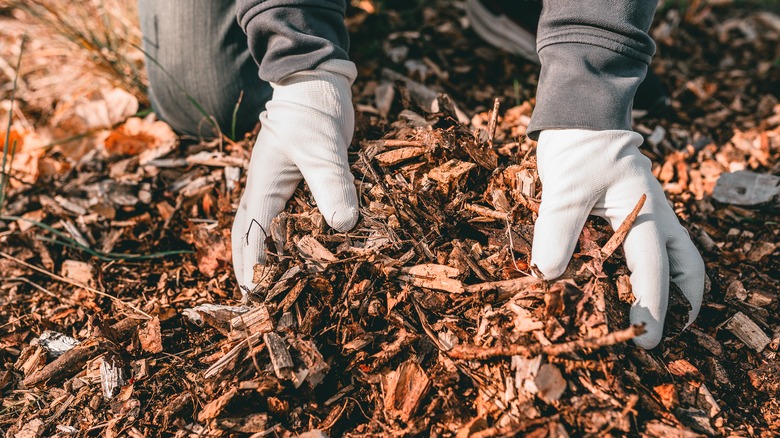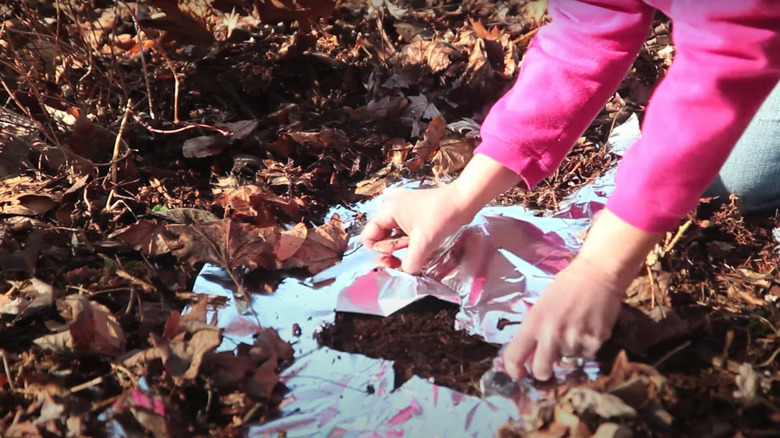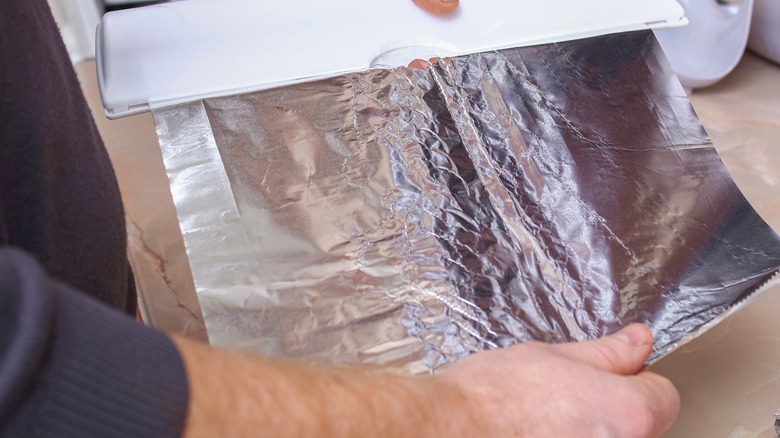Aluminum Foil Is The Ultimate Addition To Your Mulch
Gardening is no stranger to innovative methods and materials to improve plant health and yield. Among the modern tools and techniques available, a commonplace household item has emerged as a helpful gardening aid: aluminum foil. This shiny, flexible material, more often associated with kitchen use, holds a suite of unexpected applications for gardening.
Aluminum foil can be mixed into mulch to be a deterrent against weeds and various pests, a regulator of soil temperature, and a promoter of increased light exposure for plant growth. However, like any tool, integrating aluminum foil into your gardening practices should be executed carefully. There are specific techniques for adding foil to mulch, and it's important to bear in mind certain drawbacks accompanying its use. Despite this, the potential benefits make aluminum foil a worthwhile addition to your gardening toolkit. We will delve further into how you can utilize aluminum foil in your garden, guiding you through its benefits, applications, and precautions to ensure its practical use.
Ways aluminum foil can improve your mulch
Aluminum foil can enhance mulch in a variety of ways. It is a physical barrier, effectively preventing weed seeds from obtaining the sunlight they require for germination. Not only does aluminum foil play an integral part in managing weed growth, but it also serves as a surprisingly effective tool for pest control. Common garden nuisances, such as aphids and snails, can be deterred by the shiny surface of aluminum foil. However, beneficial insects like butterflies and moths are attracted to the foil and use the extra light to dry their wings.
Additionally, the highly reflective nature of aluminum foil can increase the amount of light that reaches the lower parts of plants, particularly those grown in partially shady locations or the lower leaves of taller plants. This phenomenon aids seedlings' growth by creating full plants instead of leggy, spindly ones. Aluminum foil reflects heat, helping to keep the soil cooler in the summer by reflecting the sun's rays. Likewise, it can help to keep the soil warmer in cooler months by reflecting heat toward the soil instead of letting it escape, essentially providing temperature regulation of the soil throughout the year. Finally, aluminum foil can significantly enhance soil moisture retention when used with organic mulches. As a barrier that prevents water evaporation, the aluminum foil helps keep the soil moist for extended periods.
How to add aluminum foil to your mulch
Before adding aluminum foil to your mulch, ensure your soil is adequately watered. With the soil ready, you will need to prepare the aluminum foil. Tear several sheets of foil, with the number of sheets based on the square footage of the planting beds in your garden. Cut these sheets into strips, preferably 1 ½ to 1-inch long, and lay them around your plants. The shiny side should be facing up. Exercise caution to avoid damaging the plant roots while laying the foil. Once the foil is in place, cover it with a layer of organic mulch, like wood chips or straw, and make sure to thoroughly mix the foil and mulch together. This will help keep the foil in place and enhance your garden's aesthetics.
While aluminum foil has numerous advantages as mulch, there are potential drawbacks to bear in mind. Unlike natural mulches, aluminum foil doesn't break down and contributes to the soil's organic matter. If not properly secured, it could become a litter problem and blow away by the wind. Furthermore, its high reflectivity could cause light damage to some plants if not used carefully.


